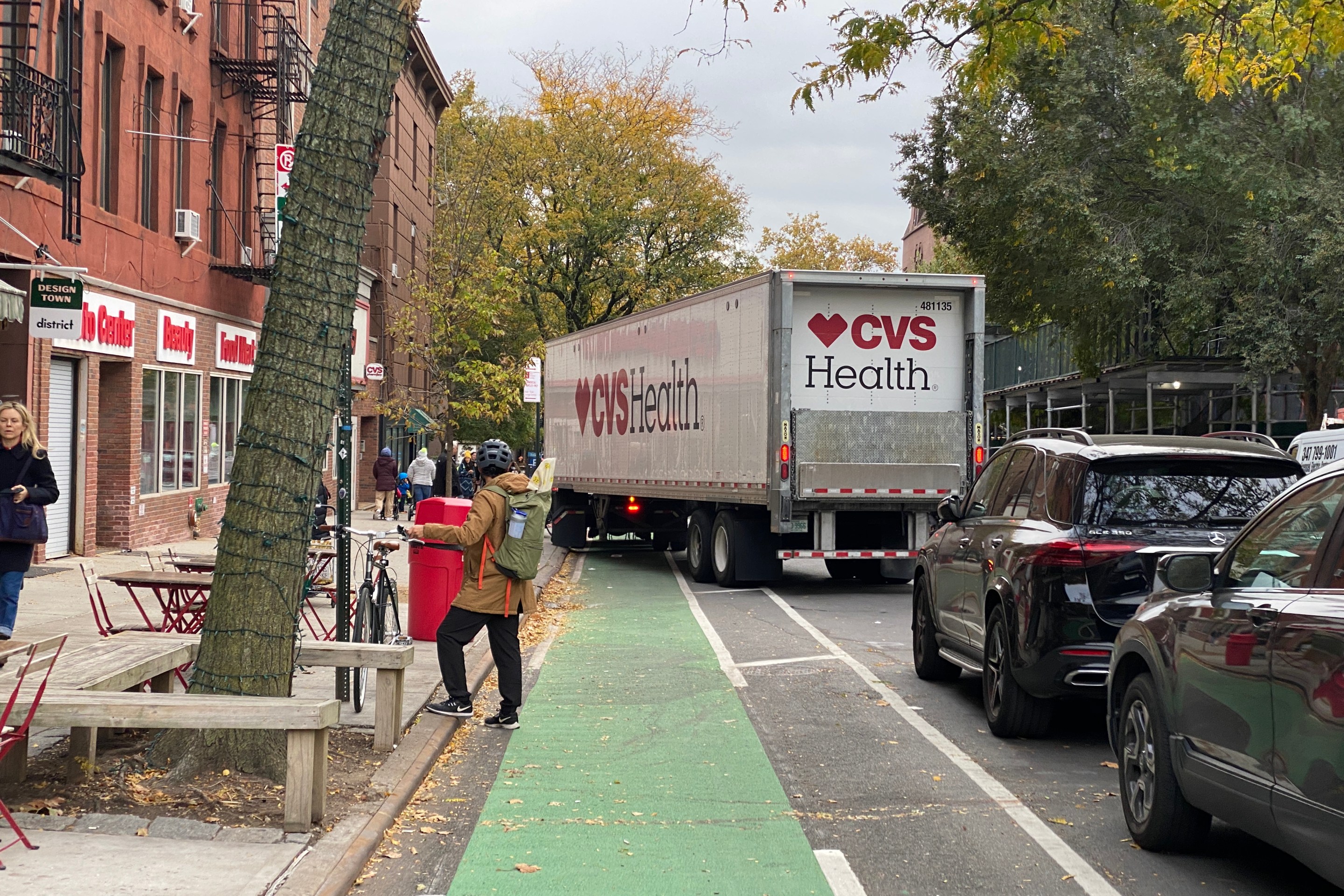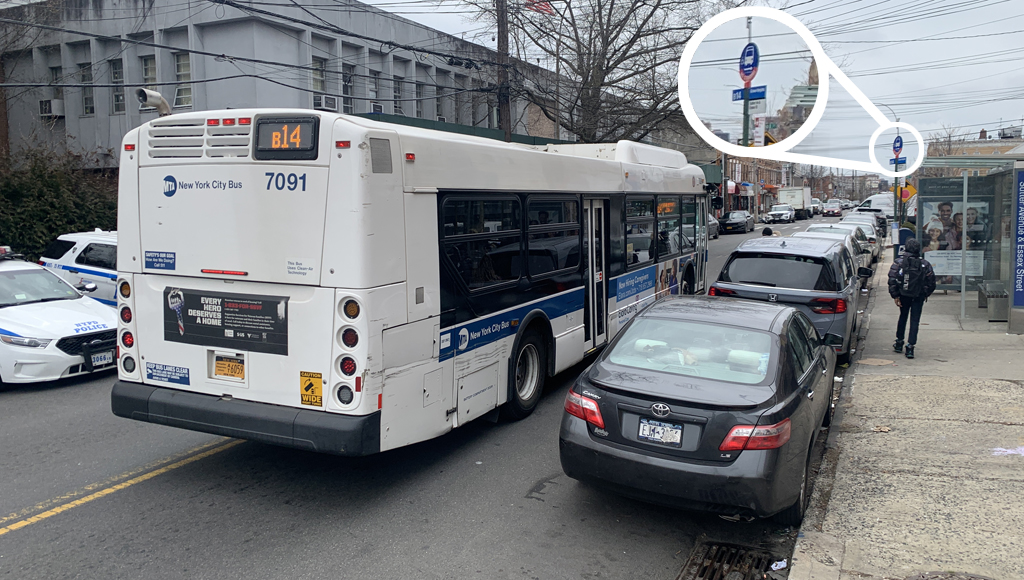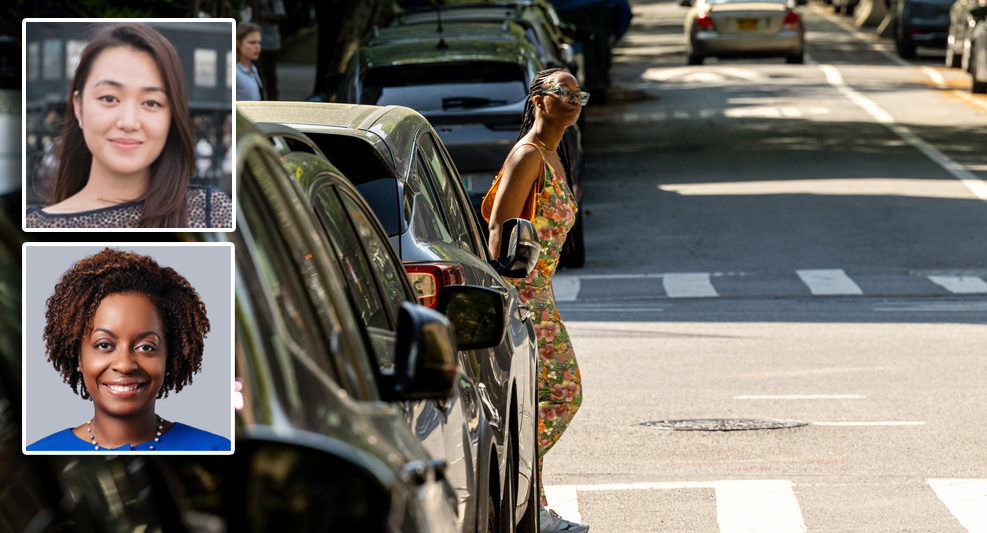The new protected bike lane on Court Street will live to see another day, after a Brooklyn judge on Thursday declined to halt work on the project at the request of local businesses who sued the city.
The redesign is almost entirely finished, rendering a temporary restraining order pointless, said Supreme Court Justice Inga O’Neale, but the legal eagle will still hear arguments for and against the revamp and decide on the fate of the redesign by the end of the year.
“At this point, issuing a stay is somewhat moot," O’Neale said.
The jurist's decision responds to last week's lawsuit by the Court Street Merchants Association that sought to undo the Department of Transportation’s redesign via the state law known as Article 78, which allows people to challenge state or local government actions. Many such cases are filed under the claim that the city Department of Transportation is not empowered to create bike lanes and other road safety improvements, but they almost never succeed because, indeed, the city does have that power.
In this case, the city asserts it has the power to remove one of two vehicle lanes from Court Street between Schermerhorn Street and Hamilton Avenue, to add a parking-protected bike lane and increase safety one of the most dangerous streets in the borough.
The agency also added painted pedestrian islands and banned parking close to many corners to improve visibility, a safety feature known as daylighting.
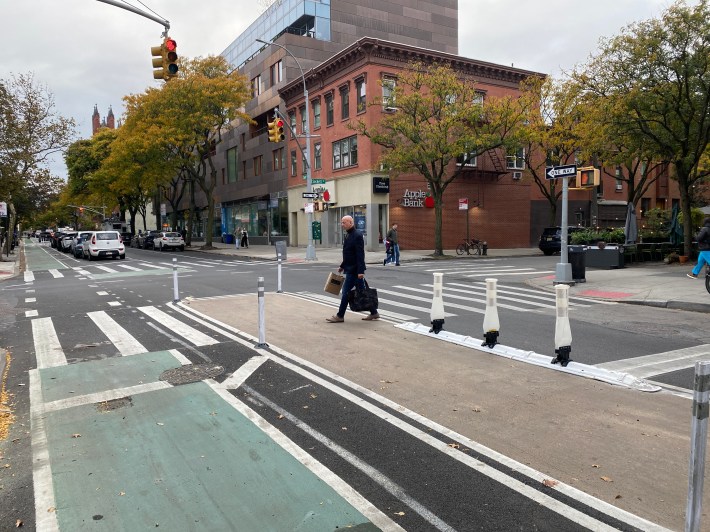
In addition to questioning the city's authority to make roadway changes, the lawsuit rehashed disproven concerns common to such actions against bike lanes, such as that the well-established redesign will harm businesses and make the street less safe.
The work on the bike lane, which started on Sept. 11, is now so complete that the lane is fully functional, aside from a few remaining markings and some granite blocks to protect new pedestrian islands, a lawyer for the city, Assistant Corporation Counsel Kevin Rizzo, told the court.
Had the merchants sued within a few days after work started, O'Neale said she might have decided differently, but she will still work on an "expedited schedule," adding that she understood the arguments on "both sides."
The judge also noted that she was "familiar" and regularly drives and walks on Court Street, which, as its name suggests, runs right outside the courthouses in Downtown Brooklyn, but said she could make a fair decision.
"I can be fair and impartial,” said O'Neale, who is, nonetheless, a driver.
The merchant group's attorney, Hartley Bernstein, admitted O'Neale "had no choice in this situation ... because the DOT has moved ahead and almost completed everything."
"But I'm very pleased that she's expedited this proceeding so that we can get a final determination, which hopefully will be that the DOT has to reverse what it's already done," added Bernstein, who is also representing merchants in a similar fight against a bike lane in Queens. (In that case, a judge ordered DOT to stop work, leaving the bike lane and the rest of the roadway in limbo.)
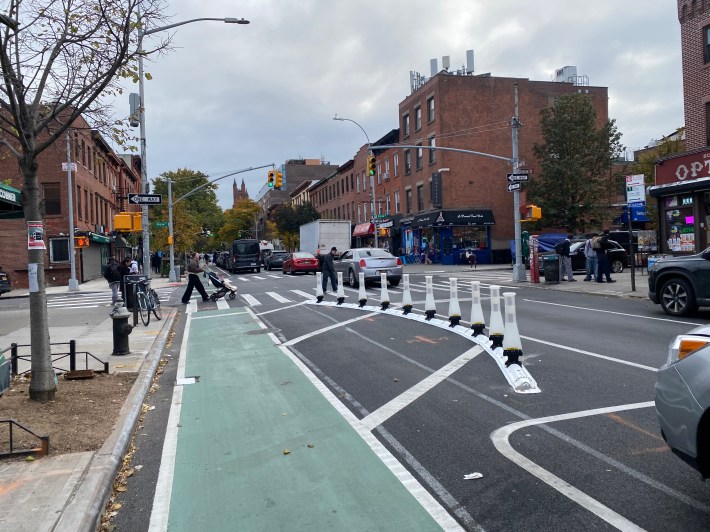
The merchants group said in court papers that there is precedent for removing a bike lane after its installation. Over the summer, the Adams administration downgraded a parking-protected bicycle path on Bedford Avenue to placate some locals. But that case only proves the DOT's point that it empowered to make changes to the streetscape, the agency said, because the agency followed a "rational" process, just as it did on Court Street.
On Court Street, that rational process included community outreach and observations of basic reality: when the street comprised two travel lanes, they were chronically filled with double-parked cars, which exacerbated traffic. In addition, there had been two traffic deaths and 155 injuries within five years on the 1.3-mile corridor, making it exceptionally dangerous.
Bike lanes and road diets have consistently yielded double-digit-percentage decreases in crash injuries. And protected bike lanes reduce crash injuries by 15 percent overall, including 18 percent among pedestrians and 22 percent for senior pedestrians, according to DOT data.
The agency went to businesses along the road and collected their feedback, before making sure parking regulations worked for businesses. And counter to the usual fear mongering, businesses have done better after bike lanes were installed elsewhere, according to city data unearthed by Streetsblog.
DOT first brought the redesign to local community boards back in June.
The judge asked both parties to return to Brooklyn Supreme Court on Nov. 24.

